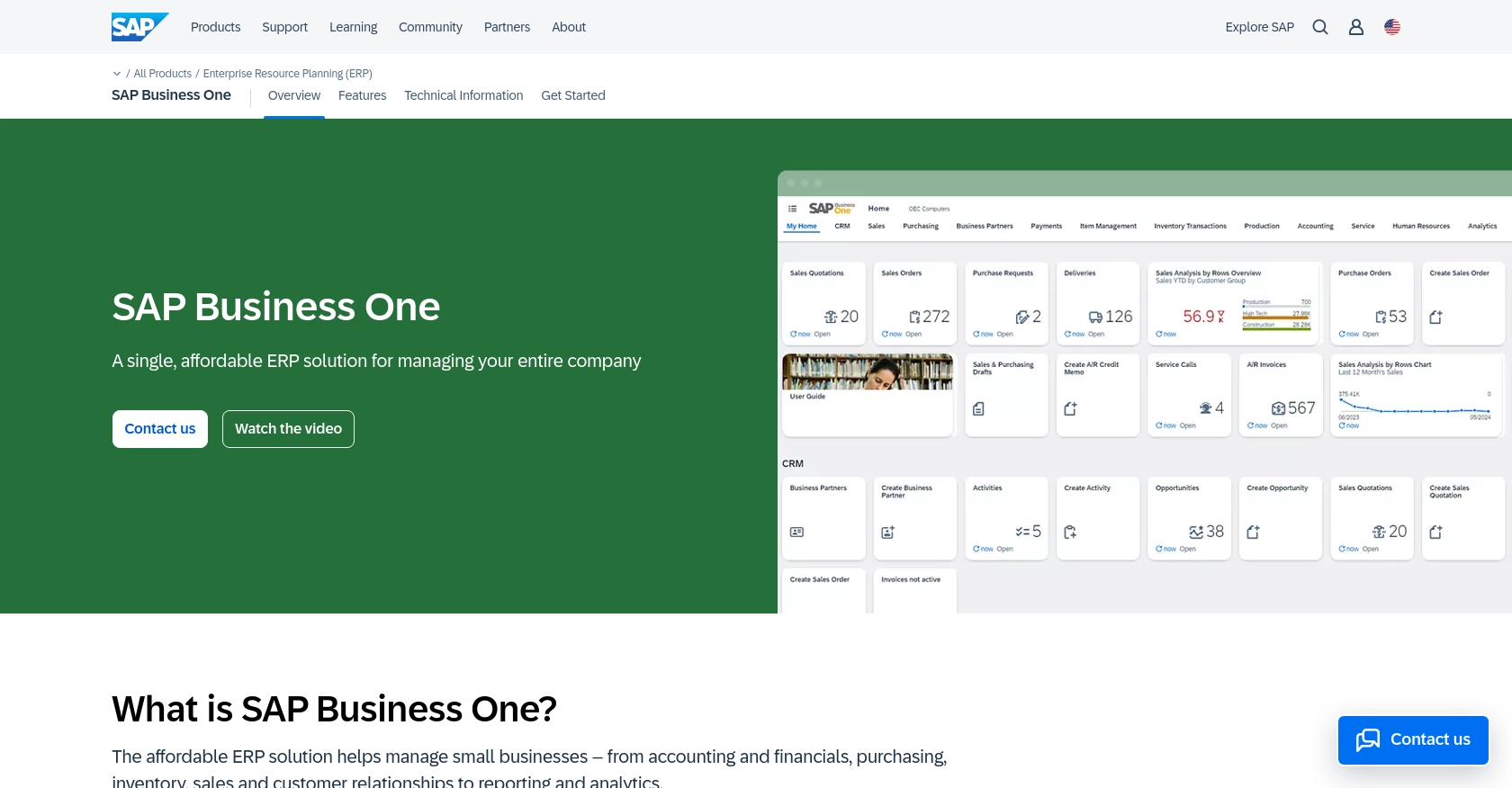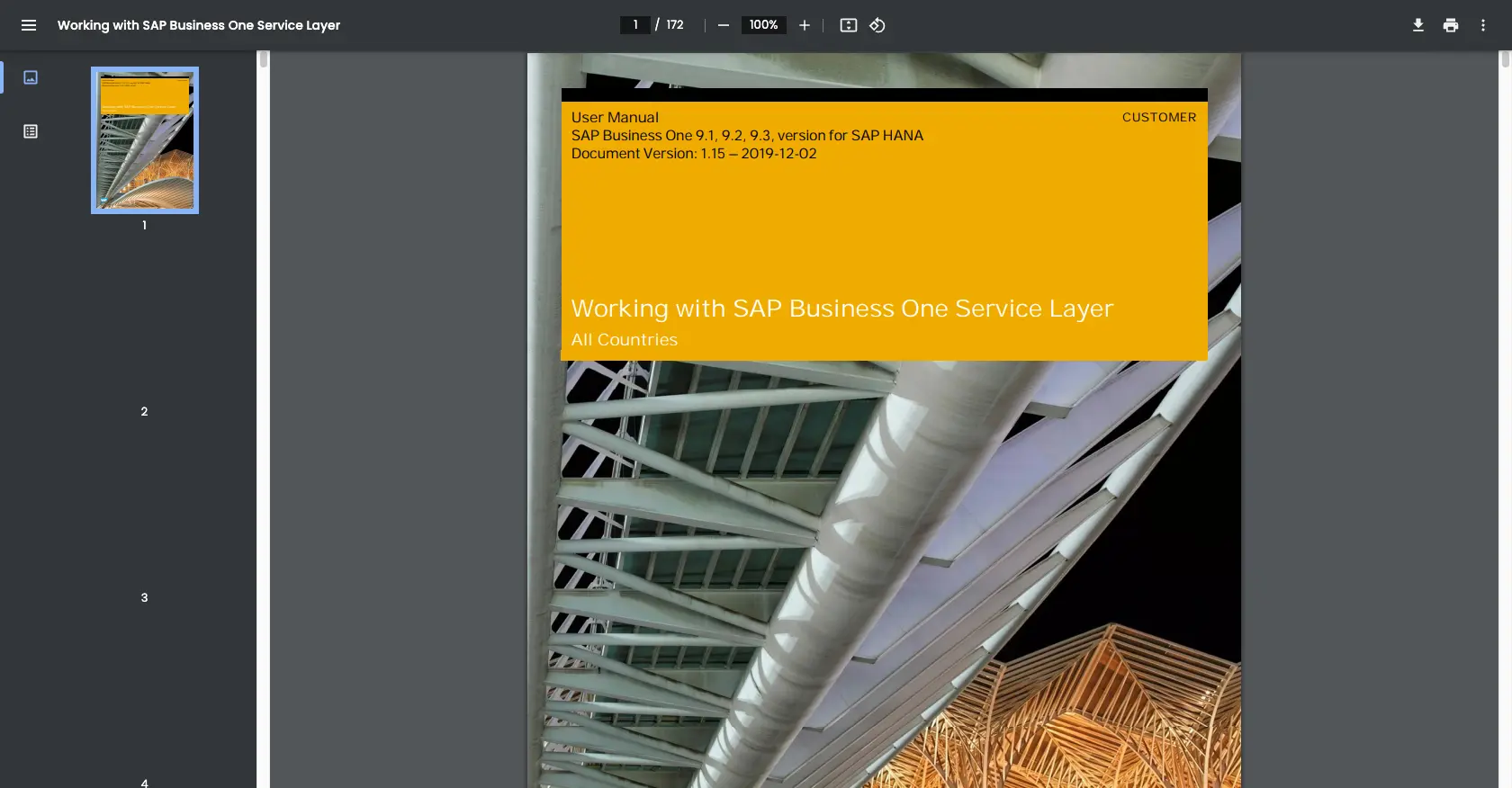Using the Sap Business One API to Create or Update Purchase Orders (with PHP examples)

Introduction to SAP Business One API
SAP Business One is a comprehensive enterprise resource planning (ERP) solution tailored for small to medium-sized businesses. It offers a wide range of functionalities, including financial management, sales, customer relationship management, and supply chain operations. By leveraging the SAP Business One API, developers can enhance business processes through seamless integration with other systems and applications.
Connecting with the SAP Business One API allows developers to automate and streamline various business operations. For example, you can create or update purchase orders programmatically, reducing manual data entry and minimizing errors. This integration can significantly improve efficiency and accuracy in managing procurement processes.
Setting Up a Test/Sandbox Account for SAP Business One API Integration
Before you begin integrating with the SAP Business One API, it's essential to set up a test or sandbox account. This environment allows you to experiment with the API without affecting your live data, ensuring a safe and controlled development process.
Creating a SAP Business One Sandbox Account
To get started, you need access to a SAP Business One sandbox environment. If your organization already uses SAP Business One, you can request a sandbox instance from your SAP administrator. If not, consider reaching out to SAP or a certified partner to explore trial options.
Configuring OAuth-Based Authentication for SAP Business One API
The SAP Business One API uses a custom authentication method. Follow these steps to configure your authentication:
- Log in to your SAP Business One sandbox account.
- Navigate to the Service Layer section to access API settings.
- Create a new application by providing necessary details such as application name and description.
- Generate your Client ID and Client Secret. These credentials are crucial for authenticating API requests.
- Set the appropriate scopes and permissions required for purchase order operations.
Ensure you securely store the Client ID and Client Secret, as they will be used in your API calls.
Obtaining API Access Credentials
Once your application is set up, you need to obtain the API access credentials:
- Access the API Key Management section within your sandbox account.
- Generate an API key specific to your application.
- Note down the API key, as it will be required for making authenticated requests to the SAP Business One API.
For more detailed information on setting up your SAP Business One environment, refer to the official documentation: SAP Business One Service Layer Guide.

sbb-itb-96038d7
Making API Calls to SAP Business One for Purchase Orders Using PHP
To interact with the SAP Business One API for creating or updating purchase orders, you'll need to use PHP. This section will guide you through the necessary steps, including setting up your environment, writing the code, and handling responses.
Setting Up Your PHP Environment for SAP Business One API Integration
Before making API calls, ensure your PHP environment is correctly configured. You will need:
- PHP 7.4 or later
- cURL extension enabled
- Composer for managing dependencies
Install the required dependencies by running the following command:
composer require guzzlehttp/guzzleThis command installs Guzzle, a PHP HTTP client that simplifies making API requests.
Creating or Updating Purchase Orders with SAP Business One API
Below is a PHP example demonstrating how to create or update purchase orders using the SAP Business One API:
require 'vendor/autoload.php';
use GuzzleHttp\Client;
// Initialize the client
$client = new Client([
'base_uri' => 'https://your-sap-business-one-instance.com/b1s/v1/',
'headers' => [
'Content-Type' => 'application/json',
'Authorization' => 'Bearer Your_Access_Token'
]
]);
// Define the purchase order data
$purchaseOrderData = [
'CardCode' => 'C20000',
'DocDate' => '2023-10-01',
'DocumentLines' => [
[
'ItemCode' => 'A00001',
'Quantity' => 10,
'Price' => 100
]
]
];
try {
// Send a POST request to create a purchase order
$response = $client->post('PurchaseOrders', [
'json' => $purchaseOrderData
]);
// Check if the request was successful
if ($response->getStatusCode() === 201) {
echo "Purchase Order Created Successfully";
} else {
echo "Failed to Create Purchase Order";
}
} catch (Exception $e) {
echo 'Error: ' . $e->getMessage();
}
Replace Your_Access_Token with the token obtained during authentication. This script initializes a Guzzle client, sets the necessary headers, and sends a POST request to create a purchase order.
Verifying API Request Success in SAP Business One
After executing the code, verify the success of your API request by checking the SAP Business One sandbox environment. Navigate to the purchase orders section to confirm the creation or update of the order.
Handling Errors and Error Codes in SAP Business One API
When making API calls, it's crucial to handle potential errors. The SAP Business One API may return various error codes, such as:
- 400 Bad Request: Invalid input data.
- 401 Unauthorized: Authentication failure.
- 500 Internal Server Error: Server-side issue.
Implement error handling in your code to manage these responses gracefully and ensure robust integration.
Conclusion and Best Practices for SAP Business One API Integration
Integrating with the SAP Business One API to create or update purchase orders can significantly enhance your business operations by automating procurement processes and reducing manual errors. By following the steps outlined in this guide, you can efficiently set up your environment, authenticate your requests, and handle API interactions using PHP.
Best Practices for Secure and Efficient SAP Business One API Usage
- Securely Store Credentials: Always store your Client ID, Client Secret, and API keys securely. Consider using environment variables or a secure vault to manage sensitive information.
- Handle Rate Limiting: Be mindful of any rate limits imposed by the SAP Business One API. Implement retry logic with exponential backoff to handle rate limit responses gracefully.
- Standardize Data Formats: Ensure that data sent to and received from the API is standardized and validated to prevent errors and maintain data integrity.
- Implement Robust Error Handling: Use comprehensive error handling to manage different error codes and scenarios, ensuring that your application can recover gracefully from failures.
Streamlining Integrations with Endgrate
While integrating with SAP Business One API can be powerful, managing multiple integrations can become complex and time-consuming. Endgrate offers a unified API solution that simplifies integration processes across various platforms, including SAP Business One.
By leveraging Endgrate, you can save time and resources, allowing your team to focus on core product development. With a single API endpoint, you can manage multiple integrations seamlessly, providing an intuitive experience for your customers.
Explore how Endgrate can transform your integration strategy by visiting Endgrate and discover a more efficient way to handle your integration needs.
Read More
Ready to get started?
